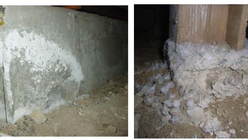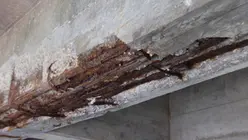The effect of cold weather conditions on concrete properties
Updated: Nov 26, 2022

How the environmental condition affect the concrete quality
Cold weather conditions can be encountered not only seasonally, but also in the case of the altitude of the area to be built and special weather conditions during seasonal transitions. In general, pouring concrete in winter conditions is quite laborious. Concrete can harden within a certain range of temperatures above zero and reach its targeted strength in a relatively short time. As a matter of fact, when the air temperature drops below zero, concrete can be poured by providing suitable conditions for the concrete to harden. However, this creates the need for better planning, additional energy, appropriate material selection, and skilled workmanship, as well as good quality control practice.
Concrete Casting in cold weather
The reason for the strength and durability problems to be encountered in concrete casting in cold weather conditions is that the mixing water required for hydration in concrete starts to harden and freezes before the concrete reaches sufficient strength. When water freezes, its volume increases by about 9%. This difference in the structure of the water during freezing causes high pressure. For this reason, if water that is completely filled into a closed container freezes, very high pressure will be applied to the container. If the water it contains freezes, the concrete will not be able to withstand the tensile stresses caused by such high pressures in the concrete and will be damaged. However, when the concrete is still fresh, it has a plastic consistency. For this reason, the volume increase caused by the water in the concrete turning into ice does not cause very high internal stresses when the concrete is fresh.
If freezing occurs in the fresh concrete after the mixture is prepared, the frozen water causes an increase in volume, and the solid particles in the concrete move away from each other independently. Since the concrete is still in a plastic consistency, it cannot resist the movement of ice into the spaces between solid particles due to this increase in volume. In this way, the mass transfer occurs with the movement of solid particles within the fresh concrete as a result of ice thrust. Due to mass transfer, the homogeneity of the components that make up the concrete is not ensured.
Freezing of fresh concrete at sub-zero temperatures occurs gradually within the concrete. The fresh concrete placed in its place begins to freeze starting from its surface, which combines with the cold air. Due to the low partial pressure in the relatively cold parts of the concrete, the water in the unfrozen parts of the concrete moves towards the cold part. The reaction of cement with water is an exothermic reaction. In fact, fresh concrete that has started to freeze still contains some unfrozen water, and the reaction of cement with water is not finished in these regions. Due to this reaction, heat is released on the surface of the cement particles in these regions. This causes the movement of water towards the cold regions and an increase in the ice mass in the concrete occurs.
Effect of frost on the fresh concrete casting
If frost occurs due to the cold weather conditions prevailing during concrete pouring, the mixing water of the fresh concrete freezes. The degree of performance loss that will occur later due to the freezing of the water in the concrete is highly related to whether the setting has started in the fresh concrete when freezing occurs. Since the water, which is essential for hydration, has frozen with the freezing of the mixing water before the setting event starts, the chemical reaction of the cement and water will not start and the concrete will not set. After the dissolution has taken place, the fresh concrete can start to set again, but in this case, re-mixing will be needed to ensure the homogeneity of the fresh concrete. However, it will not be easy to mix the placed concrete homogeneously again. If the freezing event occurs after the fresh concrete has set but before it reaches a more significant strength, irreversible damages may occur in the concrete. However, if the concrete has reached a certain strength level after it has set, it can somewhat prevent the damage caused by freezing. The reason for this is not only that the concrete at a certain strength resists the internal stress increase caused by the expansion of ice caused by the freezing of water, but also that due to the progressive hydration, a large part of the mixing water has reacted with the cement and settled in small voids. When the concrete reaches a certain compressive strength, the degree of saturation drops below the critical value and prevents water from entering the concrete from the outside. A concrete with a good mixing ratio can reach this strength in two days. With or without freezing, low temperatures delay hydration and consequently the hardening and strength gain of concrete. The setting time of the concrete placed in its place in cold weather conditions is longer than the concrete placed at normal temperatures. If concrete is frozen and left frozen, it slowly gains strength. Below this temperature, the hydration of the cement and the strength gain of the concrete do not progress.














Comments